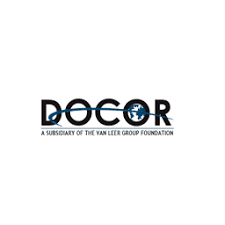Eyetel Imaging Company
%20.jpg)
EyeTel Imaging was founded in 1996 and began operations when it signed a license agreement with Johns Hopkins University to develop and commercialize a new technology for retinal imaging. EyeTel was started with the idea of using new imaging technologies to address the large, growing and addressable clinical problem of vision loss due to undetected and untreated diabetic retinopathy. The key tenets of the EyeTel Philosophy were established in those early days and are the foundation of their company: - World class technology that has extensive clinical validation - Along with expert clinical support - For use in the primary care setting to provide better care conveniently for patients - In a cost effective and easy to use way EyeTel worked in collaboration with the scientists from the Wilmer Eye Institute to develop the DigiScope, a semi-automated fundus camera with telemedicine capabilities. A patent covering the technology was granted and they filed a 510(k) for the DigiScope and received FDA clearance in 1999. A validation study independent of Wilmer was conducted at Henry Ford Hospital in Detroit, MI under the direction of Rhett Schiffman, M.D. The results of the study were published in Ophthalmic Surgery, Lasers and Imaging and demonstrated excellent agreement, sensitivity and specificity compared with the gold standard seven-field color stereo photography for identifying patients with any levels of diabetic retinopathy. As they grew, they created the EyeTel Reading Center, a world-class telemedicine service providing expert analysis of patient images by highly trained "readers". The Wilmer Eye Institute provides clinical and quality oversight for the EyeTel Reading Center. They also established a manufacturing agreement with Topzone of Changsha, China to manufacture the DigiScope. This arrangement allows EyeTel to produce the DigiScope at low cost and provides a scalable source of DigiScope production. After an extensive worldwide search, Eli Lilly a leader in diabetes research, chose EyeTel to collaborate on market development for identifying patients with diabetic retinopathy. By 2007, their development work, with the scientists and clinical experts from Wilmer and with their manufacturing and development partner in China, led to significant enhancements to the capabilities of the EyeTel Retinal Imaging System making it a robust tool to help the Optometric physician detect age-related macular degeneration, optic disc abnormalities such as glaucoma, as well as diabetic retinopathy. True to their founding principles, the enhanced EyeTel Retinal Imaging System for the optometric practice remains easy to use, cost effective, and has been extensively validated in clinical settings to ensure it's efficacy as a diagnostic tool for the practicing Optometric physician.










